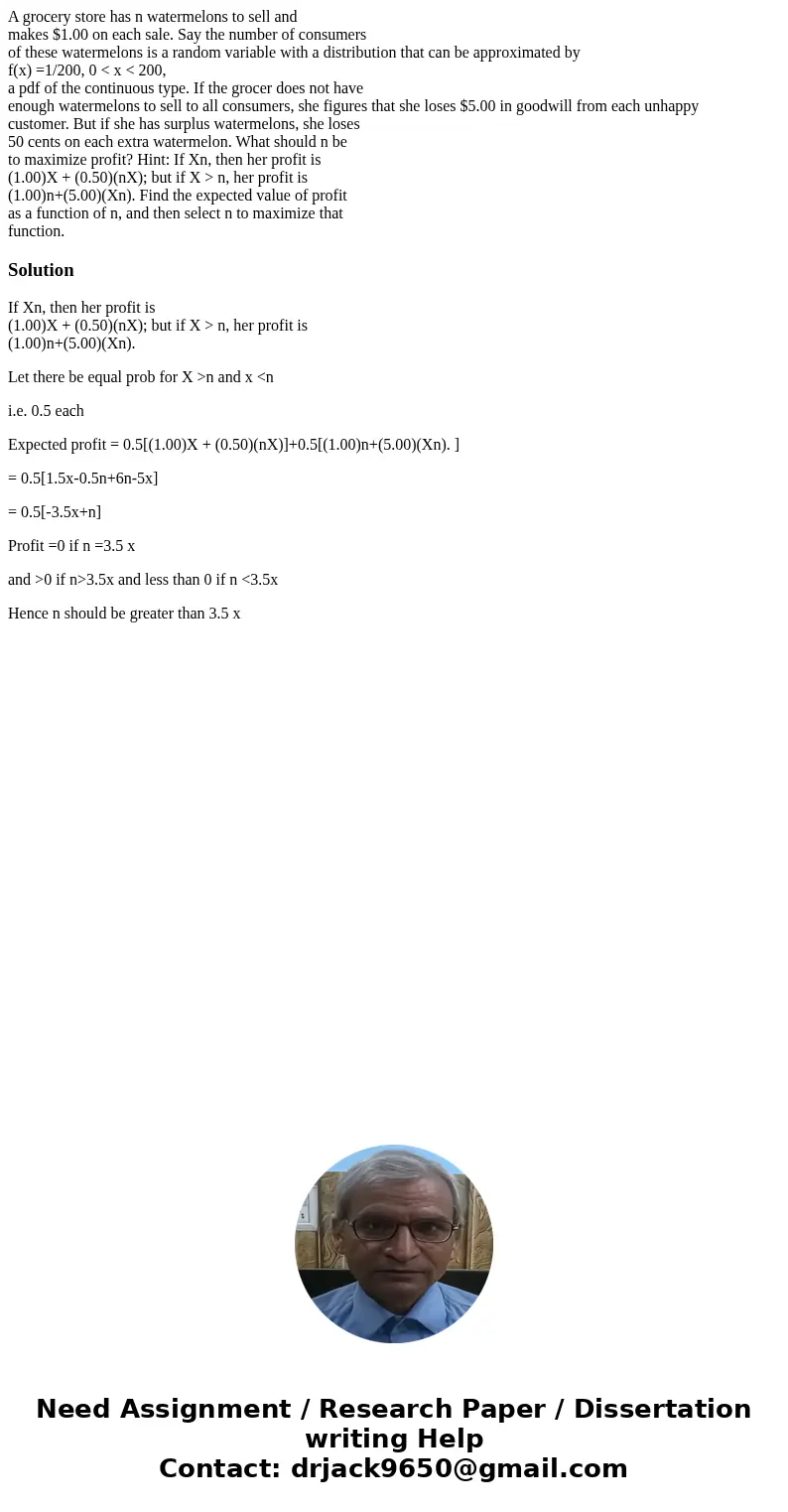A grocery store has n watermelons to sell and makes 100 on e
A grocery store has n watermelons to sell and
makes $1.00 on each sale. Say the number of consumers
of these watermelons is a random variable with a distribution that can be approximated by
f(x) =1/200, 0 < x < 200,
a pdf of the continuous type. If the grocer does not have
enough watermelons to sell to all consumers, she figures that she loses $5.00 in goodwill from each unhappy
customer. But if she has surplus watermelons, she loses
50 cents on each extra watermelon. What should n be
to maximize profit? Hint: If Xn, then her profit is
(1.00)X + (0.50)(nX); but if X > n, her profit is
(1.00)n+(5.00)(Xn). Find the expected value of profit
as a function of n, and then select n to maximize that
function.
Solution
If Xn, then her profit is
(1.00)X + (0.50)(nX); but if X > n, her profit is
(1.00)n+(5.00)(Xn).
Let there be equal prob for X >n and x <n
i.e. 0.5 each
Expected profit = 0.5[(1.00)X + (0.50)(nX)]+0.5[(1.00)n+(5.00)(Xn). ]
= 0.5[1.5x-0.5n+6n-5x]
= 0.5[-3.5x+n]
Profit =0 if n =3.5 x
and >0 if n>3.5x and less than 0 if n <3.5x
Hence n should be greater than 3.5 x

 Homework Sourse
Homework Sourse